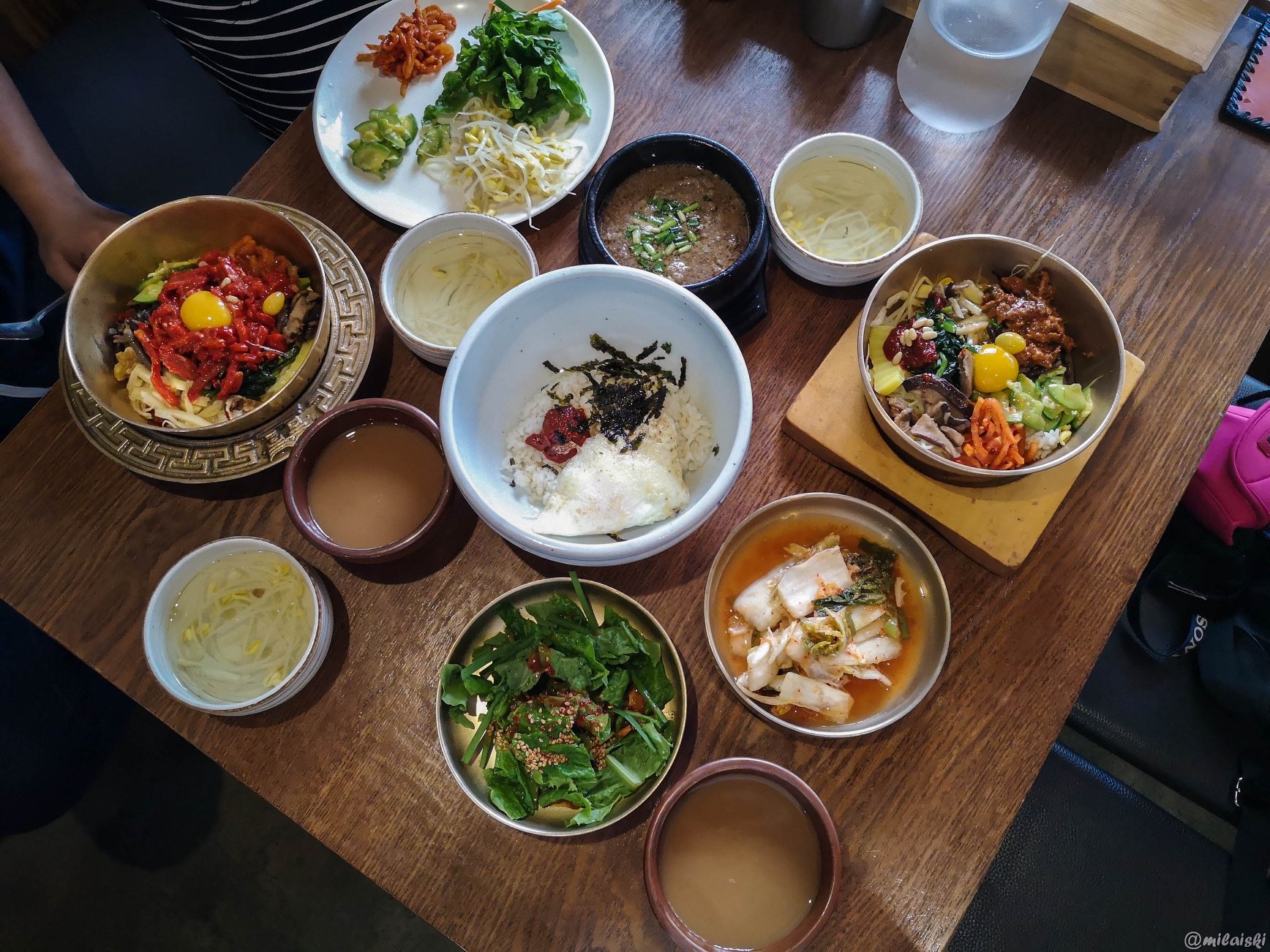While planning for my Korea trip (yes, again! ^^ 4th time!) last May, I made sure to include Jeonju in my itinerary after reading somewhere that it’s the motherland of bibimbap. Who doesn’t love bibimbap? It’s such a healthy and fuss-free meal!
There are a lot of highly recommended restaurants to try bibimap in Jeonju but we decided to ate at Gogung since it was just near the hanok we stayed in and it was the nearest in our vicinity where were already hungry. To make sure we get to try different bibimbaps, my friends and I ordered a set meal that comes with a serving of the Jeonju traditional bibimbap, Jeonju dolsot bibimbap and Yukhoe bibimbap.

Of the three, I still liked the Jeonju traditional bibimbap the most as the other two were a bit too spicy for my liking. All were delicious though! Even the side dishes (the soup!!!) were great. It was definitely a worthwhile dining experience!

Going around Jeonju though made me realize that there’s so much to the city than its bibimbap! Here are some aspects of Jeonju which made me love it:
- Hanok Village and Hanok House Experience

Jeonju is home to more than 700 hanok houses! Some have been converted to hostels and restaurants. Hanok guesthouses in Jeonju are also relatively affordable. For instance, our room for three in Pinetree View Hanok Guesthouse only costed KRW 58,800 ( ~Php 2,500/night). The price already includes breakfast and free try of hanboks! A hanok house experience in Jeonju is certainly worth considering especially if you find guesthouses in Bukchon Hanok Villase in Seoul very expensive.

2. A Foodie’s Paradise
You will never go hungry in Jeonju. There are all sorts of restaurants, street food and nights markets. In the street literally called “Pedestrian-friendly”, there a variety of affordable street food. My favorite was the hotteok stuffed with mozzarella cheese.
The Nambu Market is also a must visit for foodies. We are able to try seafood stew, flame grilled pork and takoyaki stuffed with cleaner fish. This is also the go to place if one wants an authentic experience of sundae.
3. Historical and Cultural Sites
Jeonju is home to a number of historical and cultural sites. What I love about them is that most are located in the heart of the city and are within walking distance from each other. A worthy visit is Omokdae and Imokdae. The site is an uphill walk from the Hanok Village but the view of the city is astounding. The pavilions are also beautiful and offers a very serene atmosphere.

The Jeondong Church is another very conspicuous structure in the city proper. We were lucky to chance upon a light show when we visited. We stayed there for an hour and watched the church lit up in various colors and effects!

Just a few meters from the Church is Pungnammun gate, the last of the original four gates of Jeonju. The gate is simply a sight to behold at night time. The church, Pungnammun and the Nambu Market are actually located just beside each other so these can be easily be your agenda for a night.

4. The city is green, walkable and full of charm!
During our short visit, there were times when I thought I was in fairly land. I don’t know if it was because of spring or the feeling you are experiencing a bit of the city’s past.

Restaurants and shops are so quaint. Gardens appear to be delicately maintained. Even the canals seem to be works of art. There was so much charm and culture!
Next time you go to Korea, definitely consider including Jeonju in your itinerary. It’s an easy day trip from either Seoul or Busan. It would be best though to stay at least overnight or two days to get to know and experience this beautiful city more.









